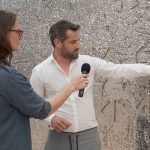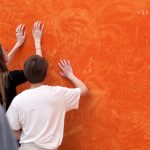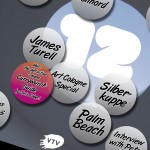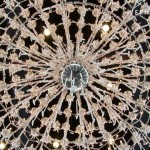Especially for the Neue Nationalgalerie in Berlin, the Tyrolean-born artist Rudolf Stingel designed an installation which transforms the character of the iconic Mies van der Rohe building. Rudolf Stingel installed a giant carpet on the floor in the gallery’s large glass hall. The pattern of the carpet dates back to an original 19th century Indian Agra rug, and has been transposed into tones of black, white and gray. Over the carpet, a huge crystal chandelier hovers in the air. In addition to the installation, four new paintings are on view on the lower floor of the New National Gallery.
Rudolf Stingel. LIVE is part of the Dornbracht Installation Projects series of events and an exhibition by the Nationalgalerie, Staatliche Museen zu Berlin (National Museums in Berlin), made possible by the Verein der Freunde der Nationalgalerie.
Rudolf Stingel. LIVE / Neue Nationalgalerie Berlin, Press Preview and Opening, February 9, 2010.
> Right-click (Mac: ctrl-click) this link to download Quicktime video file.
From the press release: “The powerful, graphic pattern and sensual opulence of the carpet stands in direct contrast with the austerity and formal reduction of the architecture. Much has been made of the sacredness of van der Rohes construction, something now seen in an entirely new light with the addition of the Indian-Persian influence in dcor, with the result that the modern temple loses something of its abstract severity. It continues to be a sacred site however – one with marked oriental overtones. “¨”¨A magnificent crystal chandelier hovers in the air above the carpet, reminiscent of places of great pomp and ceremony, and simultaneously serves to anchor the installation in an inextricably European context. After all, far from being entirely foreign, Indian and Persian carpets are a part of European cultural history, found among various other kinds of orientalia in the lounges and salons of the upper middle-classes, where, in the words of Rudolf Stingel himself, they can be seen as the expression of a tempered yearning for the other.”








